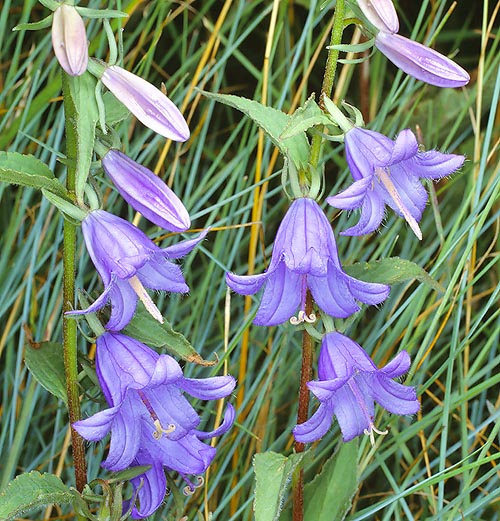Family : Campanulaceae
Text © Alessandro Bordin

English translation by Mario Beltramini

Leafy raceme, with mostly placed unilaterally flowers © Giuseppe Mazza
Common name: Creeping Bellflower.
Scientific name: Campanula rapunculoides L. (1753).
Subspecies: none.
Phytogeographic type: European-Caucasian.
Habitat: coppice, brush woods, hedges and vineyards, on preferably calcareous soil at an altitude of 150-1.500 (2.100) metres.
Blossoming: July-August.
Brief description. Perennial plant. Stem: upright, simple, poorly and irregularly pubescent, tall up to 100 cm.
Lower leaves: ovate-lanceolate, with petiole, serrate and sharp at the apex. Caulinar leaves: sessile lanceolate. All leaves are thickly bristly.
Flowers: leafy final raceme with nodding flowers on peduncles, mostly unilaterally placed. The stem at the apex carries a raceme of flowers with a great corolla, provided with a peduncle. Calyx: with patent lanceolate teeth. Corolla: with tube lacinias formed by five lilaceous petals. Fruit: capsule containing many seeds.
Possibility of confusion with other plants : none.
